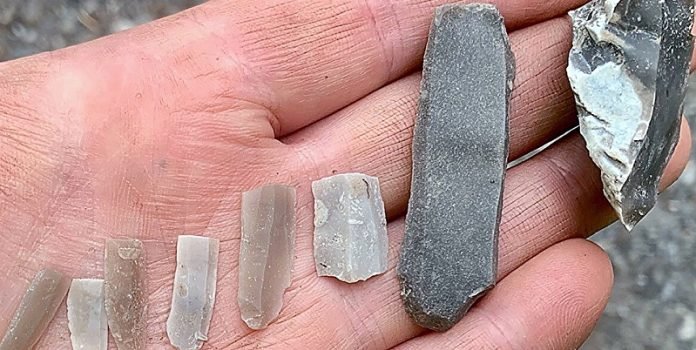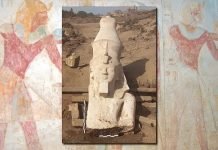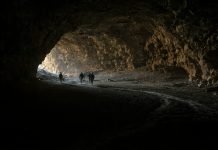
Archaeologists recently dug up something amazing in Vinjeøra, a place in southern Trøndelag County, Norway.
Before they began, Archaeologist Silje Elisabeth Fretheim made a fun promise: if what they found wasn’t from the Stone Age, she would eat her hard hat!
At first, the discovery seemed to be from the Stone Age.
They found big pieces of flint, a type of stone, which made them think it was from the first people who lived along the Norwegian coast about 11,500 to 10,000 years ago.
But as they dug deeper, they got a big surprise. The artifacts they found were not from the first settlers they expected.
Who Were These Mysterious People?
These artifacts looked different. Instead of being from the first settlers of Norway, these were from people who came from the east around 9000 BC.
Fretheim, who works at the NTNU University Museum, described the stones they found. Some were small and very straight-edged, as if they were cut with a ruler. This was not the usual Stone Age stuff. It was from a different culture!
Two Groups of Settlers
Long ago, during the last Ice Age, most of Scandinavia was covered in ice. Norway’s coast became ice-free about 12,500 years ago. After that, people started moving in.
The first group came from the southwest, from places like Spain and Portugal. They had blue eyes but darker skin compared to modern-day Scandinavians. They quickly spread along the coast.
About a thousand years later, another group came from the northeast. They traveled from places near the Black Sea, like Ukraine, through Russia and Finland, to Norway. They looked different, with varied eye colors and lighter skin. They also made stone tools differently.
The two groups met, learned from each other, and even mixed together. They both relied on the sea for food and probably used boats a lot.
Why is This Discovery So Special?
Finding evidence of these eastern settlers in Central Norway is rare. Most of the traces from these people along the west coast have been lost because of changes in the sea level after the Ice Age. But this site at Vinjeøra was preserved.
Often, archaeologists can’t just dig wherever they want. They usually dig where new roads or buildings are planned. This particular excavation happened because a new road is being built through Vinjeøra.
Fretheim was thrilled with the discovery. She said, “We have dreamed of finding this for a long time.”
So, What About the Hard Hat?
I had to ask Fretheim: Would she eat her hard hat since the discovery wasn’t exactly what she expected?
She replied that based on the age of the settlement, she was just a bit off in her guess.
So, she won’t have to eat her hard hat after all. But she’s excited about the unexpected discovery they made!
Follow us on Twitter for more articles about this topic.




